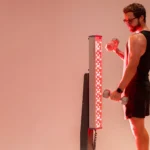For Higher or Worse: Right here Is How AI Artist Botto is Reshaping the Artwork Business

For a number of years now, the concept of Synthetic Intelligence (AI) has been both perceived as a looming menace to society’s workforce or as a godsend resolution to a limitless future. On this planet of artwork, the most recent AI growth is a little bit little bit of each. Created in 2021 by German artist Mario Klingemann and software program collective, ElevenYellow, Botto is a “decentralised autonomous artist” that has made waves within the tech and artwork communities by producing digital artworks which have fetched thousands and thousands at auctions.
For hundreds of years, the method of making artwork has been considered as an inherently human endeavour, pushed by particular person genius, emotional depth, and private expression. But as AI algorithms like Botto acquire prominence within the artwork market, the very idea of what artwork is — and who can create it — is evolving. Botto’s success within the artwork business not solely raises questions on creativity, but in addition about possession, authenticity, and the way forward for the artwork business itself.
A New Sort of “Artist“

Like most AI methods, Botto’s picture era is stimulated by prompts. Every week, Botto creates roughly 70,000 photographs every week, utilizing machine studying algorithms that analyse and synthesise knowledge from artwork historical past, together with surrealism, cubism, and impressionism. Out of the hundreds, 350 are offered to the DAO — Botto’s “decentralised autonomous organisation,” which contains 5,000 neighborhood members, who vote on which picture must be minted as an NFT and auctioned to the best bidder. The sale proceeds are shared between the voters and Botto’s treasury, fueling the AI’s ongoing inventive course of.
This very course of is what units Botto other than different AI methods. Its standing as a decentralised artist permits the creation course of to be pushed by each the machine and its human neighborhood — and this mission, to date, is a dedication that the DAO doesn’t wish to stray away from. Whereas the AI itself generates the pictures, the human members of the DAO exert vital affect by choosing the items they deem worthy of public sale. As Simon Hudson, Botto’s operator, defined to CNBC, “It’s a must to take part to assist prepare Botto.”
Hudson additional explains that Botto’s objective is each a bid for recognition as an artist and a pathway to success in any kind. Whether or not commercially or culturally, Hudson views an artist’s success by affect, and Botto has already subverted expectations by stripping away obstacles of entry inside the artwork neighborhood.
READ MORE: Synthetic Intelligence In The Actual World
The Worth of AI Artwork

Already, the monetary success of Botto’s artworks is plain. In accordance with Wired, the AI artist has generated over USD 4 million in gross sales, by which one had fetched upwards of USD 1 million at public sale. At an October 2024 public sale, CNBC reported that two Botto items offered for a mixed complete of USD 276,000 at Sotheby’s — a sign that Botto’s inventive output had gained legitimacy within the eyes of artwork collectors and traders alike. These gross sales additionally increase a important query: what’s the true worth of AI-generated artwork?
Many critics argue that AI can’t create artwork with the emotional depth or intentionality that human artists can. Writing for The New Yorker, American science fiction author Ted Chiang argues that AI artwork doesn’t have worth as a result of AI essentially can’t make artwork. Chiang writes that “artwork is one thing that outcomes from making selections,” a seemingly human type of processing. Machines, then again, don’t make selections. As an alternative, they make predictions, based mostly on present knowledge. This aligns with a conventional view of artwork — that it have to be a mirrored image of human experiences and consciousness, and that machines are incapable of manufacturing significant work as a result of they lack feelings.

Nevertheless, supporters of AI artwork have argued that the worth of artwork (whether or not AI or not) lies in its course of, not within the feelings behind it. In a response to Chiang’s New Yorker essay, Matteo Wong wrote in The Atlantic that “how a mannequin connects phrases, photographs, and data bases throughout house and time may very well be the topic of artwork, even a medium in itself.” Wong concludes that the creative course of isn’t restricted to a single artist, even when it appears so on the floor. As an alternative, it includes “societies and industries, and sure, applied sciences.” Hudson and Klingemann’s view is just like Wong’s — they hope that Botto will change the way in which by which artwork is valued. Hudson calls this a “meaning-making course of,” the place people information the machine, and the machine, in flip, mirrors human creativity.
In some ways, Botto embodies a brand new imaginative and prescient for artwork, the place the method of constructing artwork turns into simply as essential as the ultimate piece. The rise of AI artists like Botto may sign the top of the “solitary” artist archetype, as a substitute ushering in a future the place collaboration between people and machines shapes the very cloth of artwork.
READ MORE: The Metaverse Mirage: Why the Hype Is Fading
AI Artwork and Possession

Botto’s success additionally challenges the notion of possession within the artwork business. By democratising the method of artwork creation, Botto and the DAO open up new avenues for participation within the artwork world, permitting anybody to vote on the route of the art work. Naturally, this raises questions on authorship: Who owns the art work? Is it the human creators who designed the algorithms? The neighborhood members who voted on the pictures? Or is it the machine itself, which executed the inventive course of?
The truth is that there isn’t any definitive reply. At present, generative AI and its works are evaluated on a case-by-case foundation. Writer and illustrator Harry Woodgate instructed The Guardian “These applications rely totally on the pirated mental property of numerous working artists, photographers, illustrators, and different rights holders.” Whereas this situation runs rampant, the growing use of AI is permitting extra methods to be put in place. An article by Reuters means that possession claims on AI art work must be “dealt with in a way just like supplies coated by open supply or inventive commons license.” Elsewhere, there are efforts to just accept AI as a instrument for creativity, slightly than demonise it. For example, Getty Photographs, which sued London-based firm Stability AI in 2023, has now embraced the expertise. Its newest generative AI instrument lets customers create photographs which can be based mostly on Getty’s library of photographs and pictures. Getty CEO Craig Peters instructed AP Information that income from the AI photographs could be shared with creators and contributors whose work the AI was based mostly on.

That is just like how Botto works, the place members who actively take part are additionally given “Botto tokens,” which give them voting rights on the AI’s output. On this means, the DAO members will not be simply passive shoppers of artwork; they’re integral to the creation course of, actively taking part in collective decision-making. Botto represents a way forward for artwork that’s not confined to the standard boundaries of possession and creativity. It’s an artwork ecosystem that exists in a digital, decentralised house, the place community-driven selections form the route of the work. In reality, the DAO mannequin displays the way in which many digital communities operate right now, the place collaboration and shared possession are valued over particular person authority.
Artwork within the New Period

Whereas the controversy round AI in artwork is way from settled, the success of Botto signifies a broader acceptance of expertise as a authentic medium of creative expression. By combining machine studying algorithms with the enter of a collective neighborhood, Botto is reshaping the very strategy of art-making and difficult the standard system that’s related to the artwork market. Whether or not Botto’s success is a present fad or the start of a long-lasting shift towards expertise stays to be seen. In the long run, the rise of AI within the artwork world is yet one more philosophical revolution, which grapples with the identical questions which have plagued the business for the reason that starting: What’s the true nature of artwork, and who will get to create it? Botto is just not the primary disruptor within the artwork world and it definitely won’t be the final.
For extra on the most recent in tradition and enterprise reads, click on right here.








